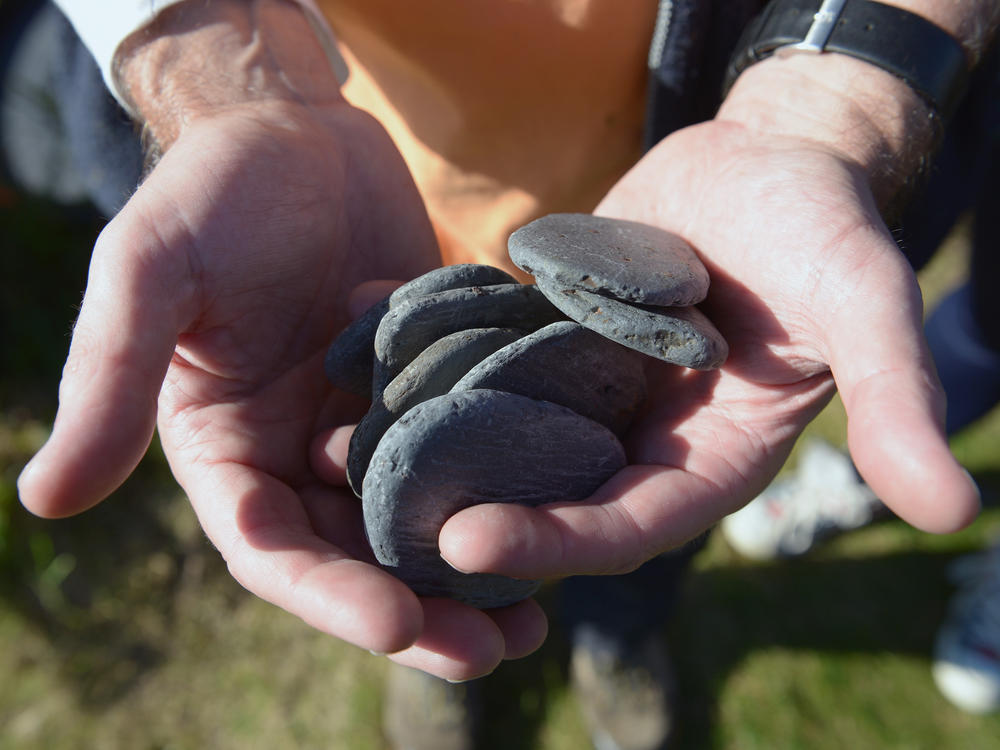Section Branding
Header Content
Study shows heavy stones may give big leaps in water — plus real-world implications
Primary Content
When skipping a stone across water, most people look for ones that are flat and light. Now, a new study suggests that curvier, heavier stones can also yield impressive skips. And these findings won't just help you improve your game, they could be applied to the real world, like helping make airplanes more efficient.
Ryan Palmer is an applied mathematician at the University of Bristol in the U.K. and co-author of the study, published this month in the Royal Society.
He and his colleague created a model to learn how shape and mass affect the way objects interact with water. They found that, when skipping rocks over a lake, "if you pick something that's slightly heavier, you get something called a super elastic response," Palmer said.
In other words, a heavier object could yield an impressive bounce.
"What happens is, the rock touches down on the water layer, and because it's heavier, it sinks down further and stays in contact for longer," Palmer said. "This increases pressure on that rock, which then increases the force that lifts it out, and you can get an almighty leap in this response."
Now, Palmer admitted that, though you may get a big leap with heavier stones, they won't result in as many skips as with flat ones. The results also depend on the stone's shape, because one that is too heavy may not work.
"So the take home really is, for a heavier rock that might sink, if it is slightly more curved, it may be more likely to skim," he said.
Palmer and his colleague were studying more than the physics of skipping stones, though. With the mathematical model, they sought to better understand aircraft icing, a phenomenon that happens when aircrafts fly through very cold weather.
Sometimes, water puddles form on an aircraft's wing, and ice crystals in the air can come along and either sink into that puddle, or skim off. If they sink, they lead to an ice buildup that can be dangerous.
But if they skim off, Palmer said, "well, it's very much the same physics and dynamics that you might find if you pick up a rock and you try to throw it across a lake."
Palmer said that it's important to know where the ice might go to better understand whether other parts of the aircraft need more protection.
He also insisted that commercial planes are safe; there are existing systems in place to protect them from dangerous ice buildup. His research aims to increase the efficiency of those protections.
"Where we live in this world of climate change and increasing fuel costs and things, actually, you're always seeking to be more efficient, and so you can better design your systems, better protect planes,"he said. "You can sort of cover these strange situations that might occur in an efficient and innovative way."
And while Palmer sought practical applications, that was not the only thing he took from his research.
"Since starting on this work it's become even more irresistible to try and skim stones, and particularly just sort of picking the slightly weirder stones," he said. "Ones that aren't necessarily so flat."
Copyright 2023 NPR. To see more, visit https://www.npr.org.
Bottom Content




